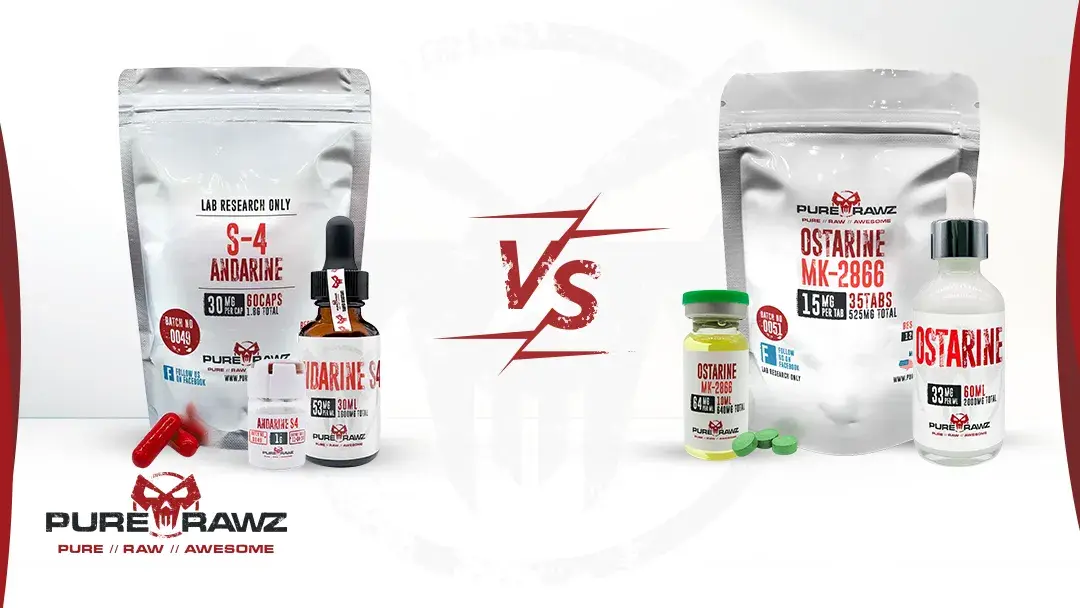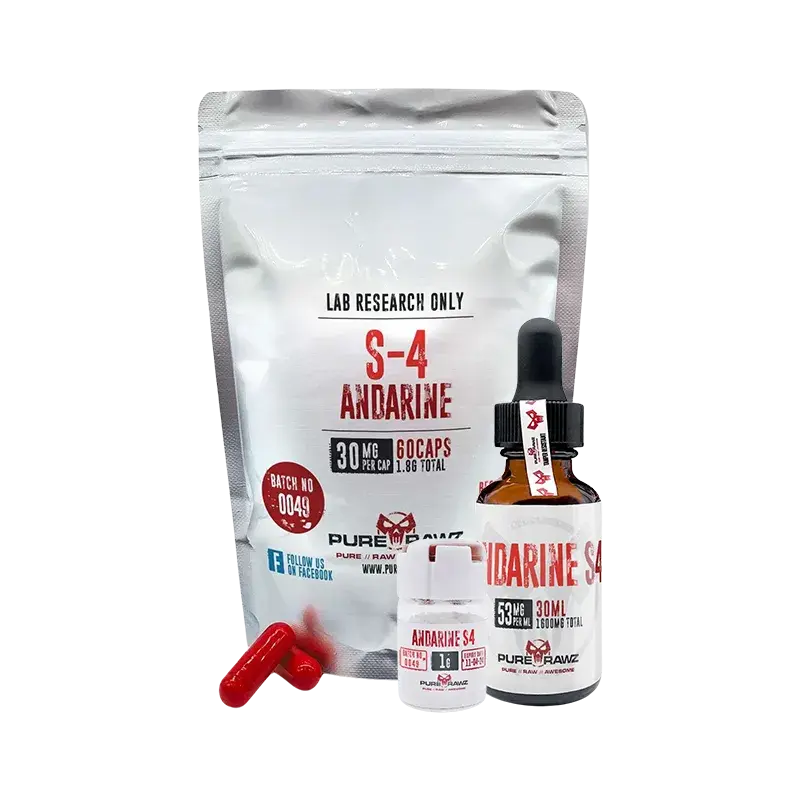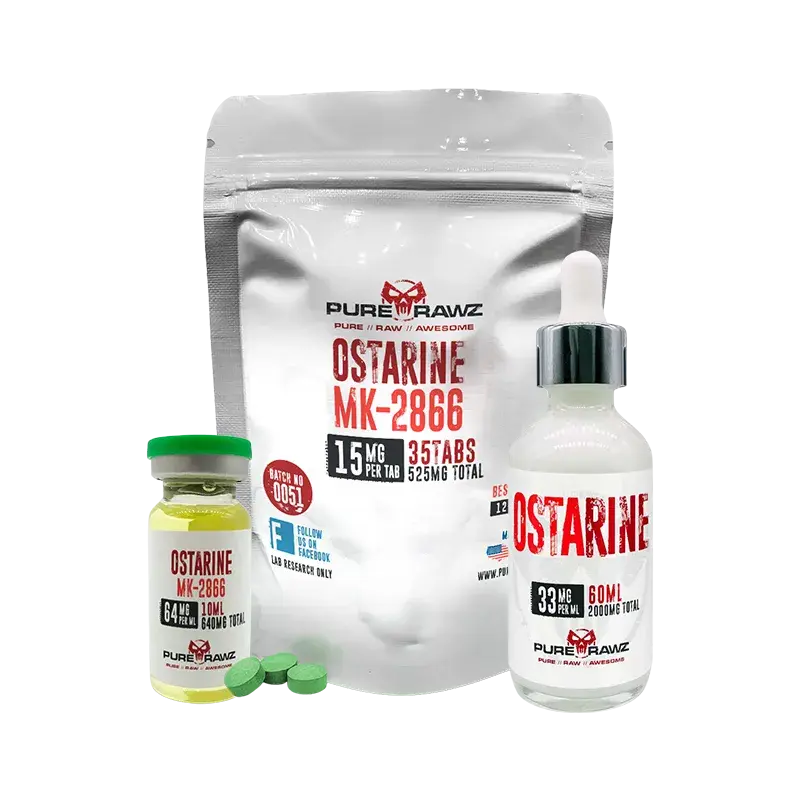🔥 WE HAVE THE BEST COMPOUNDS ON THE PLANET

In the world of SARMs, Andarine (S4) and Ostarine (MK-2866) are often compared for their versatility and effectiveness in research. While they both share a similar mechanism of action, their differences in chemical structures, properties, and composition may affect the research process.
Andarine vs. Ostarine highlights the key differences to help identify which compound is more suitable for research studies.
Andarine (S-4) is a selective androgen receptor modulator that is often researched for its potential to help promote lean muscle mass and fat loss.
Andarine may work by binding to androgen receptors, particularly in muscle and bone tissues. By binding to these receptors, they may stimulate synthesis, which could lead to muscle growth and fat loss in research subjects.

Ostarine (MK-2866) is a SARM (selective androgen receptor modulator). Research suggests that it may be potentially used to promote muscle growth, help in fat loss, and improve physical activity.
Research indicates that Ostarine may selectively target bone and muscle, potentially minimizing off-target effects, though more research is required.
This mechanism might allow muscle-building benefits with potentially fewer disturbances to hormonal balance compared to anabolic steroids.
Both Andarine and Ostarine have been shown to help maintain muscle in animal tests, especially in cases of aging or muscle loss from inactivity. Andarine may work faster at the same dose, but it could also affect more systems in the body due to stronger receptor activity.
Research shows that Andarine may cause faster changes in body fat and muscle mass. Ostarine also works well but shows slower results. The effects depend on how much is used for how long, and on what kind of animal.
Both SARMs have been studied for bone strength. Ostarine has more research behind it, especially in models of bone loss like osteoporosis. Andarine also shows potential, but has fewer published studies.

| Features | Andarine | Ostarine |
| Muscle Gain Potential | Moderate | High |
| Fat Loss | High | Moderate |
| Suppression | Moderate-high | Mild-moderate |
| Side Effects | Vision Issues | Mild Suppression |
| Half Life | 4-6 hrs | 24 hrs |
| Recovery | Less intensive | More intensive |
Ostarine has a longer half-life of about 24 hours, so in animal studies, it only needs to be given once a day.
Andarine has a shorter half-life of around 4 hours, which means it needs to be given several times a day to keep its levels steady in the body during research.
Andarine
Ostarine
Andarine and Ostarine are legal for purchase as research chemicals, but they are not approved by the FDA for human or veterinary use.
In the UK, Canada, and Australia, the restrictions apply; they are only used for clinical and laboratory studies.
Andarine (S-4) is more often utilized in research focused on fat metabolism, cutting protocols, and vascular outcomes.
Ostarine (MK-2866) is favored in studies targeting muscle preservation, lean bulking, and joint support.
Note: Both compounds are strictly intended for research purposes and are not approved for human consumption.
If you are looking to buy Andarine and Ostarine for research purposes, PureRawz is a trustworthy source.
We provide reference materials with every product we sell. A Certificate of Analysis is available for reference, providing information on identification, purity, and concentration.
No, Andarine and Ostarine are strictly for laboratory research. They are not approved by the FDA for human or veterinary use.
Yes, some studies investigate combined effects, but stacking may complicate outcome analysis.
Both of these compounds should be kept in a dry, cool place away from the sunlight to maintain their stability and effectiveness.
This information is for educational purposes only and not medical advice. Products are for research use only. Research must follow IRB or IACUC guidelines. Verify information independently before purchasing. By ordering, you agree to our Terms and Conditions. If you are not 100% satisfied with the product you received, please contact us at support@purerawz.co
ATTENTION: All our products are for LABORATORY AND RESEARCH PURPOSES ONLY, not for veterinary or human usage.

Team Purerawz provides simple and research-based information on SARMs, Peptides, Nootropics, Kratom and Stacks. Our writers and researchers make sure each article is clear, accurate, and easy to understand. We aim to help labs, students, and science enthusiasts find the right compounds for their research.
We are offering the following products on sale. Hurry up before the sale ends!
The following products are out of stock:
As part of our exclusive upscale promotion, you can add some of our top research compounds to your order at a special discounted rate.